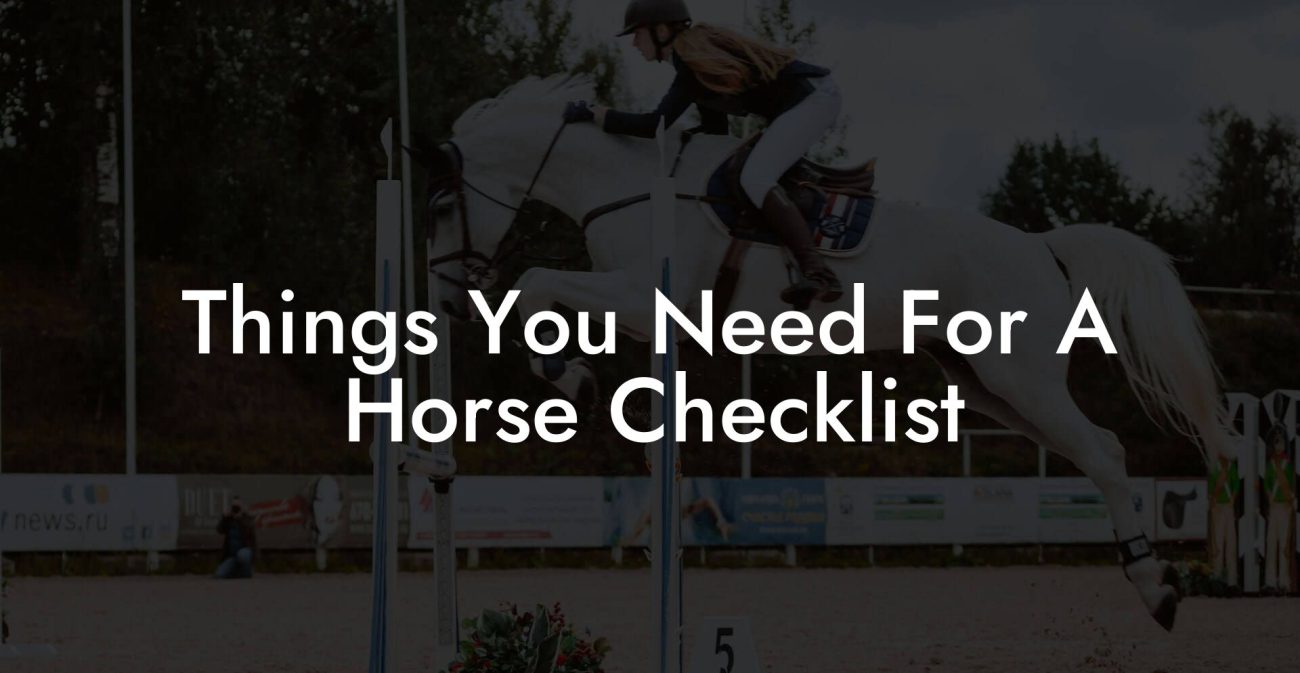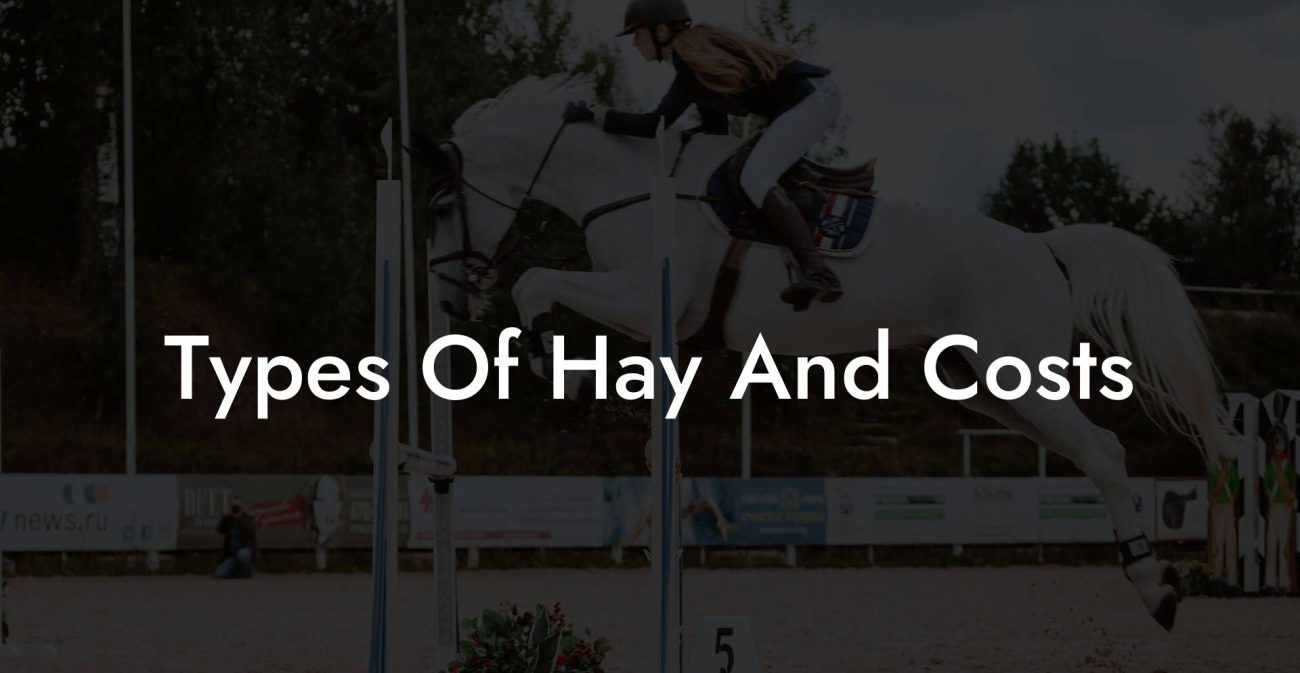Picture this: you’re scrolling through your feed when a majestic horse trots by, its mane flowing like the latest viral aesthetic, and you think, “I’d love to ride one of those beauties… if only I knew what it takes to keep one happy and healthy without breaking your bank account!” Maintaining a horse is a thrilling lifestyle choice that transcends basic pet ownership—it’s an investment in passion, responsibility, and yes, an ever-evolving monthly budget. Whether you're a Gen-Z adventurer dreaming of equestrian escapades or a millennial enthusiast ready to embrace country life, this guide will dive deep into the actual costs of maintaining a horse per month, the hidden expenses, and savvy tips to help you plan your new life with four-legged grace.
Quick Links to Useful Sections
- Understanding the Price Tag: What Determines the Cost of Maintaining a Horse?
- Diving Into Feed and Nutrition Costs
- Boarding and stable Fees: Home Sweet Home for Your Hooved Friend
- Keeping Your Horse Healthy: Veterinary and Emergency Expenses
- Hoof It: Farrier and Hoof Care Costs
- Tack, Equipment, and Accessories: The Gear for Your Gallop
- Additional Care and Beyond: Grooming, Training, and Miscellany
- Regional Variations: How Geography Influences Your Equine Budget
- Creating a Comprehensive Monthly Budget for Your Horse
- Smart Strategies for Reducing Your Maintenance Costs
- Collaborate and Share Costs
- Invest in Preventative Care
- DIY Where Possible
- Utilize Online Communities
- Plan for the Future
- Real Talk: Case Studies in Equine Budgeting
- The Urban Barn Owner
- The Rural Enthusiast
- The Show Jumper’s Investment
- Planning for the Unexpected: Emergency Funds and Insurance
- Resources and Community Support: Your Next Steps
- Your Journey to Smart, Savvy, and Satisfying Horse Ownership
- Equine Ownership FAQ: Your Common Questions Answered
- The Final Gallop
Understanding the Price Tag: What Determines the Cost of Maintaining a Horse?
The cost of maintaining a horse isn’t set in stone—it’s as variable as your favorite filter on Instagram. Several key factors influence your monthly outlay:
- Boarding vs. Owning Your Own Property: Are you renting a stall at an established barn, or do you own the land where your horse grazes? Boarding fees can vary immensely based on services provided and location.
- Feed and nutrition: From quality hay and grain to supplements and special treats, the nutritional needs of your horse will directly impact your monthly expenses.
- Veterinary and Farrier Care: Routine health checks, vaccinations, dental care, and hoof trimming are essential for your horse’s well-being and add to your regular costs.
- Tack and equipment: Saddles, bridles, grooming kits, and riding apparel aren’t one-and-done purchases—they’re long-term investments that may need replacement or upkeep.
- Additional Services: training sessions, riding lessons, transport, and sometimes even emergency medical care can also contribute to your overall budget.
In essence, whether you decide to go all-out with premium care or lean towards a more budget-friendly management style, knowing the elements that make up the cost will help you tailor your lifestyle to your financial realities.
Diving Into Feed and Nutrition Costs
When it comes to fueling a horse, think of feed as the gourmet equivalent of your Instagram aesthetic. Just as you wouldn’t survive on instant noodles alone, your equine friend requires a balanced diet that keeps them energetic and radiant (and prevents those pesky colic episodes).
Hay and Pasture: For horses, high-quality hay is a staple. Depending on the region and the season, monthly hay costs alone might range anywhere from $100 to $300. If your horse has access to a lush pasture, the bill might be lower, but pasture maintenance itself can incur expenses like fertilization and equipment upkeep.
Grains and Concentrates: For those horses with high energy needs—perhaps an enthusiastic show jumper or a spirited trail blazer—grains and concentrates become necessary. Depending on the horse's energy output and metabolism, expect to spend an extra $50 to $150 a month.
Supplements and Treats: In today’s world, even horses deserve superfoods. Whether it’s joint supplements, vitamins, or that occasional carrot-and-apple combo treat, these extras can add another $20 to $50 monthly. Remember, a happy horse is a healthy horse!
Water: Often overlooked, proper hydration is a non-negotiable. While tap water may be free or low cost, if you live in an area requiring special water treatment or if you invest in high-end hydration systems, you might see a slight uptick in costs.
Altogether, feeding your horse can cost anywhere from $200 to $500 a month, depending on quality, availability of pasture, and the specific dietary demands of your equine companion.
Boarding and stable Fees: Home Sweet Home for Your Hooved Friend
Let’s talk about where your horse will call home. Whether it’s a luxurious private stable or a simply run boarding facility, boarding fees are a significant monthly expense.
Boarding Facilities: If you’re opting for commercial boarding, the prices can vary greatly depending on the care package. Basic stall boarding with minimal amenities may cost around $300 to $700 per month, while full-service boarding—complete with feeding, cleaning, and turnout—can range from $800 to well over $1,500.
Pasture Boarding and Self-Care: Some horse enthusiasts prefer pasture boarding where the horse enjoys more freedom and space. While this option might seem economical, factor in the cost of additional services such as shelter maintenance, fencing repairs, and basic care. These expenses can realistically range from $500 to $1,000 monthly.
Utilities and Maintenance: For those who own their own property, monthly costs include utilities (water, electricity for barn lighting) and routine maintenance. These costs might add another $100 to $300 per month to your overall outlay.
Finally, the location of your boarding facility plays a huge role. Urban stables in metropolitan areas tend to charge higher rates compared to rural setups where land is more affordable.
Keeping Your Horse Healthy: Veterinary and Emergency Expenses
A healthy horse is a happy horse—and a healthy horse requires consistent veterinary care. Routine check-ups, vaccinations, deworming, and dental care are vital to keeping your equine friend in tip-top shape.
Routine Veterinary Care: Expect to spend around $50 to $200 per month on basic preventative care when you average out annual wellness checks, vaccines, and deworming costs.
Emergency and Specialized Care: While no one looks forward to a surprise vet visit, emergencies do happen. It's wise to set aside a contingency fund that might add an extra $50 to $150 a month when averaged over the year. This ensures you're prepared for any unexpected ailments, injuries, or surgical needs.
Dental Care: Dental maintenance is critical. Horses require routine floating (filing down of sharp points on the teeth) every 6 to 12 months. The cost of dental work can be averaged to about $25 to $75 per month.
Combining all these health expenses, it's reasonable to budget between $125 and $425 monthly on veterinary care, safeguarding your horse’s well-being.
Hoof It: Farrier and Hoof Care Costs
Every few weeks, your horse’s hooves deserve a little TLC, and that’s where farriers come into the picture. Just like a trendy haircut can elevate your style, regular hoof care keeps your horse comfortable, balanced, and ready to prance.
Farrier Visits: Typically, horses need hoof trims every 6 to 8 weeks, and if your horse requires shoes, then every 6 to 8 weeks as well. The combined monthly cost generally averages between $60 and $150. If your horse is an athlete or has special hoof care needs, these bills might increase.
Additional Treatments: Occasionally, additional corrective shoeing or treatments for hoof issues (like laminitis) can raise the monthly expenses. In such cases, consider budgeting extra funds to avoid any surprises.
Whether your equine friend sports stylish horseshoes or simply the bare essentials, reliable farrier services are non-negotiable for maintaining optimum hoof health.
Tack, Equipment, and Accessories: The Gear for Your Gallop
Just as you wouldn’t head out without your favorite kicks, your horse shouldn’t trot around without proper tack and equipment. Though many items are one-time investments, they still play a role in your monthly renewal and maintenance budget.
Essential Equipment: Items such as saddles, bridles, halters, and grooming tools are essential for everyday rides. Many of these come with initial costs, but periodic maintenance, repairs, or upgrades might require a monthly reserve of $20 to $100.
Replacement and Repairs: Over time, wear and tear on tack is inevitable. Depending on usage, you might budget an additional $10 to $50 per month for future replacements or unexpected repairs.
Riding Apparel and Safety Gear: For the rider, the cost of safety equipment and stylish riding attire (helmets, boots, etc.) also factors in. While these aren’t direct horse expenses, they’re part of the overall equestrian lifestyle costs that can easily add another $20 to $75 monthly if you’re staying current with trends.
In total, while tack and equipment typically don’t demand a huge monthly bill, setting aside around $50 to $200 ensures you’re always ready for your next ride—fashionably and functionally.
Additional Care and Beyond: Grooming, Training, and Miscellany
Beyond the basics, many horse owners fall in love with the finer aspects of equine care. These additional costs, although optional, contribute to overall well-being and longevity.
Grooming and Bathing: Regular grooming sessions not only keep your horse sparkling but also prevent skin issues. Whether you do it yourself or hire professionals, expect to spend $10 to $50 monthly for grooming supplies or occasional services.
Training and Lessons: For beginners and pros alike, training sessions—be it for riding skill enhancement or behavioral adjustments—can vary dramatically. Group lessons might cost around $100 to $300 a month, whereas private coaching could push the envelope even further.
Insurance: Protecting your investment is crucial. Equine insurance helps cushion the blow of unforeseen events such as accidents, theft, or natural disasters. While policies vary widely, a basic insurance plan might add $30 to $100 to your monthly budget.
Transportation and Travel: If your horse is destined for shows, competitions, or trail rides across town, factoring in transportation is essential. Monthly averages for trailer maintenance, fuel costs, or occasional rentals can range from $25 to $150.
Other Miscellaneous Costs: Don’t forget about the little extras: fly sprays, hoof cleaning equipment, stable supplies like shavings, and even perhaps a monthly treat from your local feed store that now feels more like investing in community spirit than a simple purchase. These might add an extra $10 to $50 to your overall expense.
Combining all these elements, additional care can contribute an extra $125 to $600 per month, varying by your commitment to extra pampering and specialized care.
Regional Variations: How Geography Influences Your Equine Budget
Just as rent varies wildly between New York City and a small Midwestern town, the cost of horse care is heavily influenced by your geographic location. Urban areas and regions with a higher cost of living can push monthly expenses on every front.
For instance, boarding fees in coastal or metropolitan regions may be significantly steeper due to high operating costs and land prices. In contrast, rural areas might offer more affordable pasture boarding options, although you might have additional responsibilities like land maintenance.
Weather and climate factors also come into play. In colder regions, the need for additional shelter, heated barns, and extra feed (when pasture isn’t available) can drive up costs during winter. Meanwhile, in warmer climates, you might invest more in fly control and cooling systems for your horse.
As a savvy equestrian, consider joining local online community boards or social media groups where fellow horse enthusiasts share price tips, vendor recommendations, and cost-saving strategies unique to your region. This insider information can be priceless when planning your budget.
Regardless of where you reside, estimating your monthly expenditure should take into account the localized cost index for services, feed, and care. An average estimate across regions might see total monthly expenses ranging from $600 to well over $2,000 per month.
Creating a Comprehensive Monthly Budget for Your Horse
Balancing passion and practical economics is an art form. Here’s a simplified breakdown that you can tailor to your specific situation:
- Feed and Nutrition: $200 – $500
- Boarding/Stable Fees: $300 – $1,500
- Veterinary, Dental & Emergency Care: $125 – $425
- Farrier Services: $60 – $150
- Tack, Equipment & Accessories: $50 – $200
- Additional Care (Grooming, Training, Insurance, Transport): $125 – $600
Adding these up, you can see that the monthly cost of maintaining a horse falls largely between $860 and $3,375. Of course, these figures are approximations and will shift based on your individual choices, care regimen, and geographical location.
The key to success is planning ahead. Create a flexible budget that allows for seasonal shifts, unexpected emergencies, and those moments when you want to indulge in a little extra luxury for your four-legged friend.
Smart Strategies for Reducing Your Maintenance Costs
While horses are undeniably expensive, there are plenty of strategies to help you manage costs without compromising on quality care. Here are some savvy tips to keep your budget in check:
Collaborate and Share Costs
Consider teaming up with fellow horse enthusiasts. Sharing boarding spaces, bulk-buying feed, or even rotating a shared farrier schedule can lead to significant savings.
Invest in Preventative Care
Preventing problems is always cheaper than fixing them. Regular vet visits, routine dental check-ups, and consistent farrier schedules can stave off expensive emergencies down the road.
DIY Where Possible
There’s a lot of maintenance you can handle yourself. Learning basic grooming techniques, minor tack repairs, and even feed management can reduce labor costs.
Utilize Online Communities
Engage with social media groups and online forums dedicated to horse owners. They are treasure troves for discount alerts, equipment swap meets, and local deals on everything from feed to riding lessons.
Plan for the Future
Save a little extra each month for unexpected expenses. Over time, small savings can create a robust emergency fund—an absolute must in the unpredictable world of equine care.
With these tips in hand, you can optimize your spending and ensure that every dollar goes toward giving your horse the best life possible.
Real Talk: Case Studies in Equine Budgeting
Sometimes the best way to understand the cost of horse maintenance is to hear real-world stories from fellow equestrians who’ve navigated the financial roller coaster. Here are a few case studies that bring budgeting to life:
The Urban Barn Owner
Meet Alex, a young professional based in an urban center who fell in love with the idea of owning a horse. Alex opted for a full-service boarding facility that offered everything from daily turnout to premium feeding plans. With boarding fees averaging $1,200 per month, plus an additional $400 on veterinary, farrier, and feed costs, Alex’s monthly expense was roughly $1,800. Despite the high price tag, Alex justified the expense by leveraging social media to connect with fellow riders and even organized group events to share costs and experiences.
The Rural Enthusiast
On the other end of the spectrum is Jamie, living on a farm in the countryside. With ample pasture space and the ability to manage most care tasks manually, Jamie’s expenses were markedly lower. Monthly feed costs were around $250, with boarding and maintenance fees coming in at about $600. Factoring in occasional veterinary checks and farrier visits, Jamie spent roughly $1,000/month—proving that with a bit of hustle and self-reliance, caring for a horse can be more budget-friendly.
The Show Jumper’s Investment
Then there’s Morgan, a passionate show jumper whose horse is both a competitor and a companion. With the added expenses of specialized training, high-quality feed, and top-tier veterinary care to keep performance levels sharp, Morgan’s costs soared closer to $2,500 per month. However, the return on investment wasn’t solely in dollars—it also came in the form of achievements, competitions, and the electrifying feeling of riding at peak performance.
These stories serve as reminders that the cost to maintain a horse per month is not a one-size-fits-all figure. Your unique priorities, regional differences, and lifestyle choices will all shape your monthly horse care budget.
Planning for the Unexpected: Emergency Funds and Insurance
Even with meticulous planning, life with horses can be full of surprises. An unexpected illness, injury, or natural disaster can rapidly escalate costs and catch you off guard. That’s why establishing a robust emergency fund is as vital as maintaining a regular care routine.
Emergency Savings: As a rule of thumb, set aside an extra 10% to 20% of your monthly horse care budget into a dedicated reserve. This way, whether it’s an emergency vet visit or an unexpected repair on a critical piece of equipment, you’re financially prepared.
Insurance Options: Equine insurance can cover a range of eventualities. While insurance premiums might add an extra $30 to $100 per month, they provide peace of mind and financial protection during times of crisis. Compare policies carefully, as coverage can vary significantly depending on the provider and the specific needs of your horse.
Preparing for the unexpected not only safeguards your finances but also ensures that your horse continues to receive proper care, no matter what surprises come your way.
Resources and Community Support: Your Next Steps
Embarking on a journey in equine care is both exhilarating and financially challenging. Luckily, there’s a vibrant and supportive community of horse enthusiasts who are ready to share advice, affordable solutions, and personal experiences. Here are some resources to help you refine your budget and level up your horse care game:
- Online Forums and Social Media Groups: Platforms like The Horse Forum, Reddit’s r/equine, and various Facebook groups are treasure troves of real-life advice and cost-saving tips.
- Local Barn and Stable Associations: Join local networks and attend horse shows, clinics, and community events to connect with others who share your passion—and maybe even score a discount on bulk supplies.
- Financial Planning Tools: Use budgeting apps and spreadsheets designed specifically for pet or equine care to neatly organize and monitor your monthly expenses.
- Workshops and Webinars: Keep an eye out for free or low-cost educational events hosted by equine professionals, offering both care insights and budgeting tips.
- Veterinary and Farrier Recommendations: Ask your vet or farrier for cost-saving measures or package deals that might be available through their networks.
Remember, being a part of this community not only helps you discover innovative ways to manage your monthly expenses but also fosters a supportive network that shares your love for all things equine.
Your Journey to Smart, Savvy, and Satisfying Horse Ownership
Ultimately, the decision to maintain a horse is more than just a financial commitment—it’s a lifestyle choice fueled by passion, perseverance, and sometimes, a little bit of whimsy. Whether you’re just starting out or have been riding for years, balancing cost with care will always be a central theme of your journey.
With today's budget-conscious mindset and access to online communities, smart planning, and comprehensive resources, every prospective horse owner can transform the daunting “cost to maintain a horse per month” figure into a manageable reality. Think of it as curating your very own living, breathing masterpiece—each dollar spent is an investment in a lifestyle that brings endless companionship, adventure, and joy.
Your journey may have its twists and turns, but armed with knowledge, savvy budgeting, and a supportive community, you're set to navigate the equestrian world with style. Embrace the wild ride, and remember: while the costs can be high, the rewards—both emotional and experiential—are truly priceless.
So, saddle up, gear up, and get ready to dive into a world where every month brings new challenges, heartwarming victories, and the undeniable thrill of forging a bond with one magnificent creature. Your future in equine care awaits, and it’s about to be a wild, rewarding ride.
Equine Ownership FAQ: Your Common Questions Answered
Here are some frequently asked questions that dive deeper into the nitty-gritty details of how much it costs to maintain a horse per month:
1. What is the average monthly cost to maintain a horse?
The average monthly expense can range from about $860 to over $3,000. This estimate depends on factors like board type, regional costs, feed quality, veterinary care, and extra services such as training and insurance.
2. How much do boarding fees contribute to the monthly cost?
Boarding fees vary widely—from around $300 for basic stall boarding in a rural area to over $1,500 for full-service boarding in urban centers.
3. How can I lower the cost of feed and nutrition?
Ways to reduce feed costs include bulk-buying hay and grain, optimizing grazing time with quality pasture access, and joining local co-ops or online groups for discount deals.
4. What are the essential veterinary costs?
Routine veterinary care, including vaccinations, deworming, dental care, and occasional emergency visits, typically adds an additional $125 to $425 per month.
5. How often does my horse need farrier services?
Generally, horses require hoof trims every 6 to 8 weeks, and if shoes are needed, farrier visits may cost an average of $60 to $150 per month.
6. Are there reliable strategies to manage and reduce overall costs?
Absolutely. Smart budgeting, sharing resources with other horse owners, and investing in preventative care can help lower long-term expenses.
7. Does owning a horse require an insurance policy?
While not mandatory, equine insurance is highly recommended to cover unexpected emergencies, accidents, or natural disasters, and may add around $30 to $100 monthly.
8. How do regional differences affect the overall cost?
Costs can vary significantly by geographic region due to differences in boarding fees, feed prices, and local service expenses, with urban areas tending to be more expensive.
9. Can I DIY some aspects of horse maintenance to save money?
Yes, many owners handle basic grooming, minor repairs, and even some feed management on their own, which can result in noticeable savings.
10. Is it possible to budget for both routine care and unexpected emergencies?
Definitely. Setting aside an emergency fund (typically 10-20% of your monthly budget) and exploring insurance options will help you stay financially prepared.
The Final Gallop
Embracing horse ownership goes beyond a mere pastime—it’s a journey filled with adrenaline, unexpected challenges, and moments of pure joy. With the right financial planning, this lifestyle can be both fulfilling and manageable. From daily feed and board to comprehensive veterinary and farrier care, every aspect of maintaining a horse contributes to a vibrant experience that is as enriching as it is expensive.
By understanding the intricacies of costs—from predictable monthly fees to those surprising, once-in-a-while expenses—you can customize your equine experience to suit your budget without compromising your horse’s health and happiness. This guide not only sheds light on every financial detail but also empowers you with smart strategies and community resources to help you confidently navigate the world of equestrian living.
Your journey toward responsible, rewarding horse care starts with informed budgeting and a commitment to quality. Every dollar invested is a stepping stone in creating a safe, loving environment for your horse—a partnership built on trust, care, and shared adventures. So go ahead, saddle up, and let your financial planning be as strong and resilient as the bond you share with your magnificent companion.
The trail ahead may have its bumps, but armed with a solid strategy and the support of a passionate community, you’re ready to ride into a future filled with both thrilling adventures and smart, sustainable care. Happy trails and even happier budgeting!













